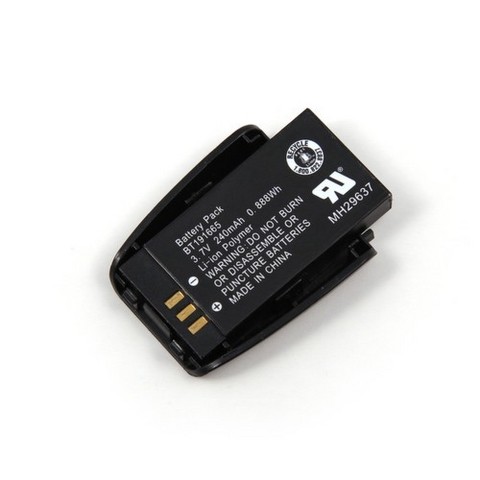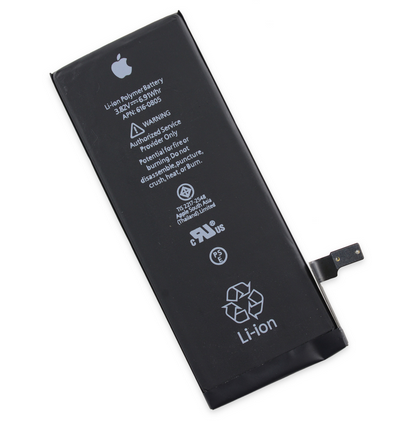Battery Navigation
Latest topics
Search
Battery Statics
Ads
Definition of Battery:
Page 1 of 1
 Definition of Battery:
Definition of Battery:
The batteries are sources of electrical energy generated by direct conversion of chemical energy. A stack can be used once, a rechargeable battery several times since. A battery is an assembly of batteries or accumulators. A battery consists of two electrodes, the anode and cathode which are immersed in the electrolyte. The anode is made of materials selected for their ability to release electrons. In general these are metals (lead, iron, zinc, cadmium, calcium, aluminum, magnesium, lithium) or hydrogen. The cathode is made of materials capable of binding electrons. Using sulfur, halogen or metal oxides. There are two main types of batteries, saline and alkaline: a cell salt, the electrolyte is a compound salt (ammonium chloride, zinc,) while in an alkaline battery, the electrolyte is a basic solution containing an alkali metal (lithium, sodium, potassium, ...).
The electrolyte consists mostly of a salt dissolved in a solvent stable vis-à-vis the electrodes. The electrodes are selected for their properties to solubilize and ionize the salt.
The majority of batteries placed on the market are the alkaline batteries (or saline), and contain more mercury since 1994. The only mercury-containing batteries are button battery is gradually replaced by other substitutes that contain more mercury.
The batteries do not recharge, the oldest are the voltaic pile (1800) and the Leclanche. According to ADEME, 604 million batteries (about 20,300 tonnes) were placed on the market in 2002, approximately 15% built into the devices. The battery sticks manganese dioxide (alkaline and saline) represent 88% of marketed, button cells (about 92 tons) 68 million units. The quantities of batteries collected in France in 2002 are 6,460 tonnes, composed as follows:
- Button batteries: 23 tons
- Alkaline and saline: 5,461 tonnes,
- lithium battery: 165 tonnes,
- Zinc-air batteries: 811 tons.
Batteries are hazardous waste that must be stored in sealed containers, protected from weather and heat sources and should not be mixed with other waste. Storage may be subject to regulation or not ICPE, according to the quantities stored. For the storage of lithium batteries, the special conditions for explosive waste to be put in place.
Since 1 January 2001, companies have an obligation to collect or to collect, recover or cause to be used, to remove or dispose of their spent batteries and accumulators. Any producer, importer or distributor is required to take back batteries that are reported and to remove or eliminate them in facilities classified under the Act of 19/07/76 ICPE.
If you are a manufacturer, importer, distributor under your brand, you are financially responsible for processing these batteries in the quantities placed on the market.
In the case of a local authority or as a distributor, you can contact the directors on the market or their representative organizations to finance the treatment of batteries in your possession.
Control of the disposal of batteries and accumulators, as with all hazardous waste is produced with a schedule for monitoring of industrial waste (BSDI).
Several organizations have been created to allow different directors on the market to meet their regulatory obligations. Fixed capital stock companies, associations or groups, these organizations receive from their members a contribution calculated on the amount of batteries and accumulators placed on the market within the meaning of the decree. The base thus formed allows the financing of collection and treatment of batteries and accumulators to the objectives announced in the MEDD. All these entities must submit, every two years, an agreement with the departments in charge of this matter. These agreements are subject to approval by the government, which thus provide control over the sector.
The electrolyte consists mostly of a salt dissolved in a solvent stable vis-à-vis the electrodes. The electrodes are selected for their properties to solubilize and ionize the salt.
The majority of batteries placed on the market are the alkaline batteries (or saline), and contain more mercury since 1994. The only mercury-containing batteries are button battery is gradually replaced by other substitutes that contain more mercury.
The batteries do not recharge, the oldest are the voltaic pile (1800) and the Leclanche. According to ADEME, 604 million batteries (about 20,300 tonnes) were placed on the market in 2002, approximately 15% built into the devices. The battery sticks manganese dioxide (alkaline and saline) represent 88% of marketed, button cells (about 92 tons) 68 million units. The quantities of batteries collected in France in 2002 are 6,460 tonnes, composed as follows:
- Button batteries: 23 tons
- Alkaline and saline: 5,461 tonnes,
- lithium battery: 165 tonnes,
- Zinc-air batteries: 811 tons.
Batteries are hazardous waste that must be stored in sealed containers, protected from weather and heat sources and should not be mixed with other waste. Storage may be subject to regulation or not ICPE, according to the quantities stored. For the storage of lithium batteries, the special conditions for explosive waste to be put in place.
Since 1 January 2001, companies have an obligation to collect or to collect, recover or cause to be used, to remove or dispose of their spent batteries and accumulators. Any producer, importer or distributor is required to take back batteries that are reported and to remove or eliminate them in facilities classified under the Act of 19/07/76 ICPE.
If you are a manufacturer, importer, distributor under your brand, you are financially responsible for processing these batteries in the quantities placed on the market.
In the case of a local authority or as a distributor, you can contact the directors on the market or their representative organizations to finance the treatment of batteries in your possession.
Control of the disposal of batteries and accumulators, as with all hazardous waste is produced with a schedule for monitoring of industrial waste (BSDI).
Several organizations have been created to allow different directors on the market to meet their regulatory obligations. Fixed capital stock companies, associations or groups, these organizations receive from their members a contribution calculated on the amount of batteries and accumulators placed on the market within the meaning of the decree. The base thus formed allows the financing of collection and treatment of batteries and accumulators to the objectives announced in the MEDD. All these entities must submit, every two years, an agreement with the departments in charge of this matter. These agreements are subject to approval by the government, which thus provide control over the sector.
largebattery- Posts : 12
Points : 34
Reputation : 0
Join date : 2011-11-29
Page 1 of 1
Permissions in this forum:
You cannot reply to topics in this forum













» NIO Phone 2 Smartphone Battery NBET02
» Mercedes Becker Map Pilot Battery HJS100
» Braun Silk-épil 9 Flex Type 5380 Epilator Battery
» Samsung Galaxy Tab Active Tablet PC Battery EB-BT365BBU
» Samsung Galaxy Tab Active 3 SM-T570 Tablet PC Battery EB-BT575BBE